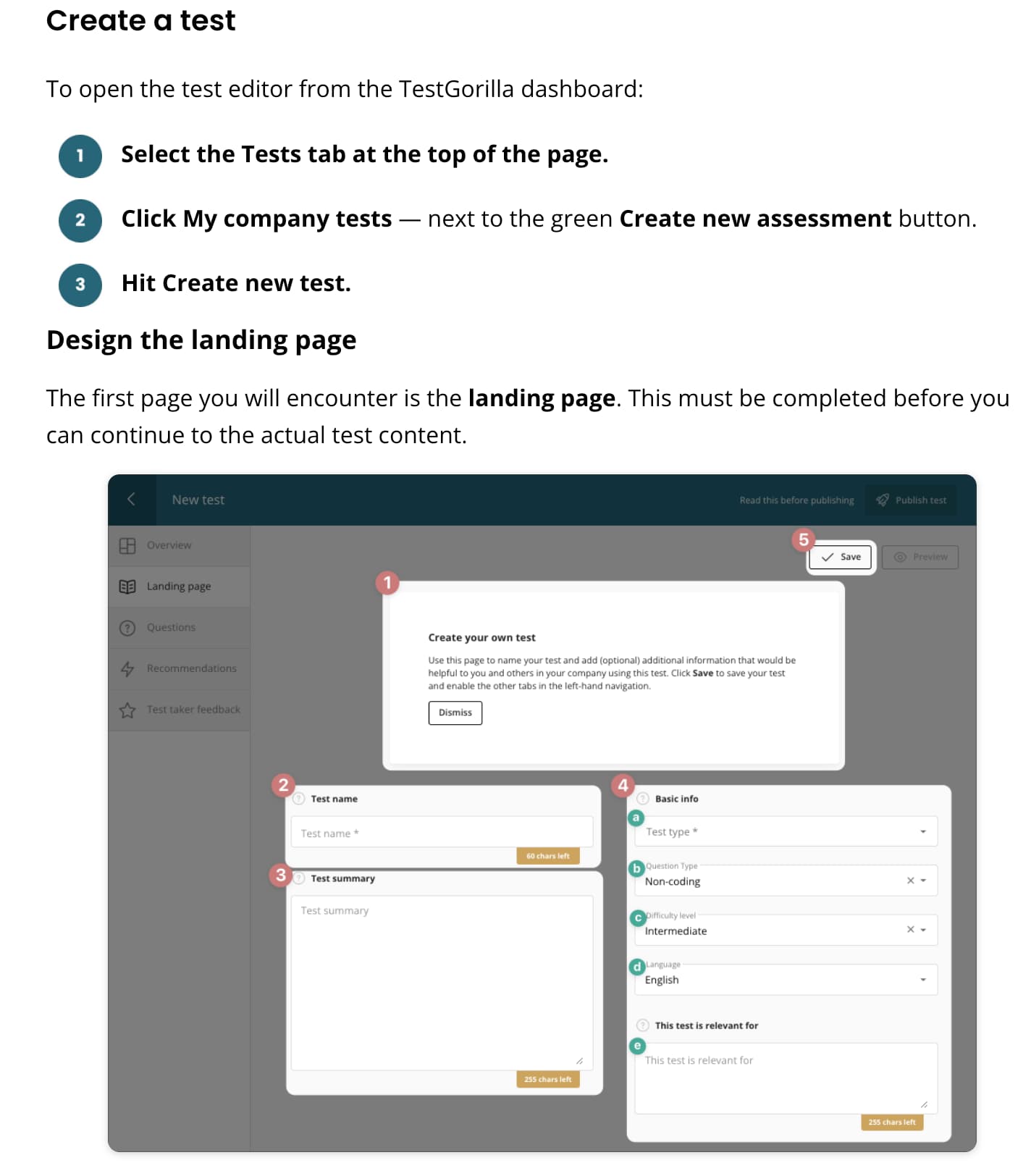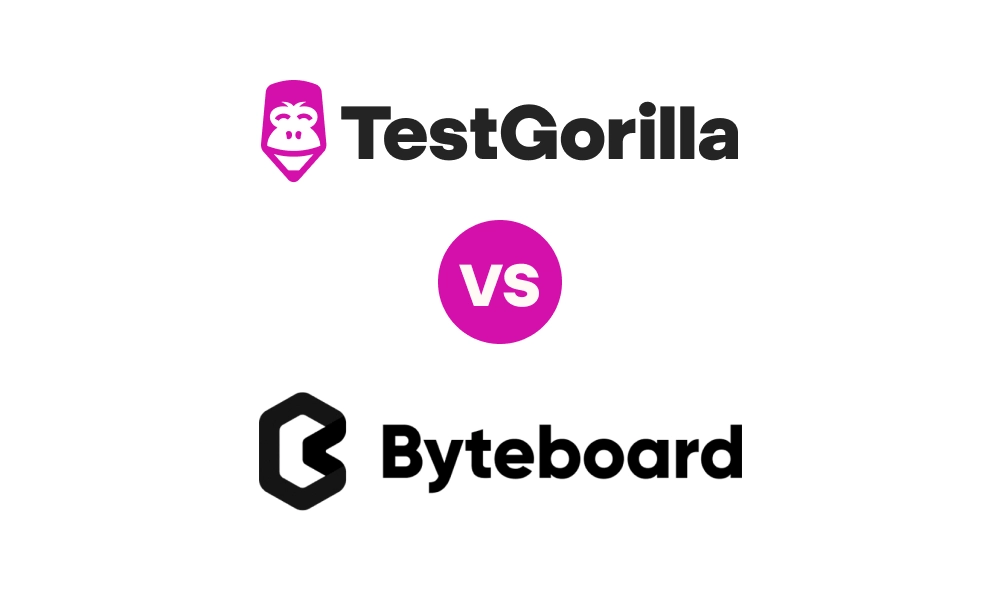HiPos (High Potentials): How talent assessments help identify, recruit, and retain future leaders
In 2023, more than three-quarters of employers reported talent shortages.[1]
Even when labor markets stabilize, locating, recruiting, and retaining high-quality talent remains a long-term priority for most organizations.
In other words, businesses are on the hunt for HiPos (high potential employees).
HiPos don’t just want to get the job done. They are hungry to learn and develop within your organization, harnessing their skills to rise to the top.
But how can you tell which job candidates and employees are HiPos?
This article explains how data-backed talent assessments, multi-measure talent assessments offer 7 ways to identify HiPos and facilitate their developmental growth.
Whether you’re hiring a contractor or a PHP developer, talent assessments help you quickly find the HiPos in your talent pool.
Table of contents
- What is a HiPo employee?
- The difficulties with HiPos
- How talent assessments help with high potential employees
- 7 ways to use talent assessments to optimize your processes for identifying, recruiting, and retaining HiPos
- Beyond talent assessments: 3 best practices to remember for HiPo employees
- Use talent assessments to hire and support HiPos
- Sources
What is a HiPo employee?
A high potential employee (HiPo) is someone who has the necessary skills, motivation, and potential to advance to and succeed in high-level, senior leadership roles.
HiPo employees tend to distinguish themselves from their peers by showing leadership ability, technical skills, high productivity, and the potential to elevate individual and organizational performance.
High potential vs. high performing
It’s important to understand the differences between HiPos and high performers.
HiPos are typically high performers, but not all high performers are HiPos.
A high performer succeeding in their current job does not mean they have the potential to ascend the career ladder to more critical leadership roles.
High-performance employees may have a narrow set of skills that are valuable to their performance and your organization’s growth, but not the potential to lead at the highest levels.
They may also lack the motivation or desire to advance their careers in an upward trajectory, which differentiates them from HiPos.
The characteristics of HiPo employees
Before you can learn how to identify and assess a HiPo employee, it’s important to understand their common characteristics.
HiPo characteristics | How they work |
Exceed expectations | HiPos go above and beyond to deliver outstanding results. They have a strong record of success and take the initiative with difficult projects. |
Lead and inspire others | HiPos are strong leaders who encourage others to succeed. They tend to have strong communication, critical thinking, and problem-solving skills. |
Adaptable | HiPos thrive under pressure and in uncertain situations. They value and contribute new ideas to solve problems. |
Value continuous learning | HiPos have a learning mindset. Their main priority is to consistently develop new skills and acquire knowledge. They value constructive criticism and welcome new challenges. |
Highly motivated | HiPos have a strong passion for their role and drive to succeed beyond their immediate responsibilities. |
The difficulties with HiPos
Identifying HiPos requires an understanding of what types of skills, behaviors, and motivations lead to success.
Traditional hiring practices paired with poor employee development make HiPos hard to find because they do not adequately assess skills or behavior, leaving many HiPos to slip through the cracks.
Outdated strategies like degree inflation, resume requirements, and hiring for culture fit introduce bias into the hiring process and do not properly evaluate employee potential.
If employers do manage to hire HiPos, properly upskilling and retaining them is a challenge without sufficient learning and development programs.
Degree inflation screens out HiPos
Inflating the worth of degrees is a bias-prone hiring strategy that shrinks your talent pool without offering any concrete data about a candidate’s skills or growth potential.
Degree requirements are biased because they screen out candidates who have low incomes, are Black, Indigenous, and other People of Color, or have disabilities. These groups are all disproportionately affected by degree inflation.
In fact, only 34% of Black adults and only 28% of Hispanic adults have college degrees, while 50% of White adults and 66% of Asian adults have college degrees.
Not only is bias in your hiring process unethical, but it also screens out the large number of high potential employees who don’t have degrees.
One study from “Harvard Business Review” found college graduates are actually less engaged at work and have a higher turnover rate – strong indicators HiPos can be found outside of traditional hiring pools.[2]
To be fair, someone having a degree does not mean they are a low-potential employee; however, shrinking your talent pool with degree requirements leads you to miss out on nontraditional HiPos who can positively impact your organization, like STARs (Skilled Through Alternative Routes).
Resume requirements do not assess HiPo skills
If you don’t know what a candidate’s skills are, you risk making a mis-hire while missing out on candidates who have the potential to lead your business in the future.
There’s a common misconception about resume evaluation being the best way to get a feel for a candidate’s skills.
But research shows 66% of employers agree that applicants exaggerate skills and abilities on their resumes, and 78% of job applicants stretch the truth about their skills and experience.[3]
Resumes do not offer concrete data that a candidate will exceed expectations, lead others, or have a learning mindset.
Culture fit thwarts innovation and creativity
Hiring for culture fit is an outdated recruitment strategy that often fails to attract and retain HiPo employees.
Why? Because hiring for culture fit often conflates candidates’ values with their character traits and hobbies.
Interviewers and recruiters looking for candidates who fit your existing culture end up choosing candidates they can identify with on a social level, focusing on shared interests, opinions, and hobbies.
Culture fit may be a great way to find a new friend or like-minded colleague, but it screens out HiPos.
That’s because HiPos thrive on innovation and creativity and aren’t afraid to change existing workplace culture.
If HiPos are not able to challenge the status quo through outside-the-box thinking and creativity, they won’t be empowered to lead and evolve your organization for the better.
A lack of learning and development increases turnover
HiPos want learning and development opportunities.
In fact, 68% of employees would stay with their employer long-term if they provided upskilling opportunities.
If your organization does not take advantage of HiPos’ learning mindset and developmental potential, they’ll head for the door.
To reduce employee turnover, provide opportunities and programs for your HiPos to thrive and grow in their career.
How talent assessments help with high potential employees
Talent assessments are data-backed, multi-measure tests that evaluate candidates’ technical skills, soft skills, personality types, situational judgment, and motivation.
Rather than assessing candidates on their educational background, talent assessments are part of a holistic hiring process that gives HiPos an opportunity to show their real capability and raw talent.
This is how they help recruiters and HR professionals with HiPos:
Reduce mis-hires
According to The State of Skills-Based Hiring 2024, 90% of organizations reduced mis-hires when using skills-based hiring strategies, including talent assessments.
Talent assessments reduce mis-hires by identifying quality candidates with the right technical skills and abilities – so you don’t end up with a candidate who looked good on paper but wasn’t able to perform in their role.
But talent assessments also evaluate a candidate's cognitive ability and personality type.
As we learned earlier, a HiPo doesn’t only have strong technical skills. They also have specific cognitive skills that enable them to thrive in fast-paced, challenging work environments.
Cognitive ability tests are a great tool to evaluate a candidate’s:
Agility when navigating a dynamic work environment
Ability to learn quickly on the job
Role-related intelligence, which you can’t see on a resume
Critical thinking and problem-solving skills
Identify leadership potential
Personality tests give you insights into candidates’ behavior, motivations, and leadership potential.
In short, they determine if a candidate is a good technical and personality fit.
But what type of personality does a good leader have? Different organizations may require different kinds of leaders.
If you’re hiring a HiPo as a creative director, for example, you’ll want candidates who are imaginative and enjoy working on a variety of different projects. Your preferred leadership style for this role might be a risk-taker that likes to form deep connections with team members.
But if you’re hiring a HiPo as a programmer, you may prefer a more conventional and detail-oriented leadership style. A rule-follower with strict adherence to organizational protocols may be your preferred personality type.
Above all, leaders should drive growth, encourage innovation, and help achieve organizational goals.
Personality tests assess leadership qualities like emotional intelligence and self-awareness.
Track employee growth
Talent assessments are a key part of developing HiPo employees. You can use talent assessments to track employee growth during the:
Onboarding process: Use talent assessments during the onboarding stage to learn whether your new employee has internalized the knowledge and skills received during onboarding
Developmental process: You can also use a talent assessment, like our Communication test, at the beginning of your leadership program, then again three months later to measure their progress
Performance evaluation process: Incorporate talent assessments into your performance evaluations, giving employees frequent opportunities to measure their own growth and communicate their needs
Contributing to employee growth through developmental training and leadership opportunities boosts employee engagement and reduces turnover – so your HiPos can thrive for the long term.
The State of Skills-Based Hiring 2024 also found that 94% of companies that switched to skills-based hiring experienced increased employee retention.
Keeping high potential employees at your company and tracking their growth makes succession planning for management roles easier.
7 ways to use talent assessments to optimize your processes for identifying, recruiting, and retaining HiPos
Now that we’ve explored how talent assessments can help you identify and retain HiPo employees, let’s discuss seven actionable ways you can use talent assessments to optimize your HiPo processes.
7 ways to optimize your HiPo processes at a glance
Ways to use talent assessments | How they optimize the HiPo process |
1. Identify your ideal HiPo candidate | Conduct a skills-gap analysis to identify internal skills gaps and the type of HiPo that can address them |
2. Use the right combination of tests | Combine tests early in your hiring process to learn candidates’ role-specific, personality, and leadership skills |
3. Assess culture add and motivation | Test HiPos’ potential to add to your existing culture and what motivates them to succeed |
4. Assess personality type and leadership | Use personality tests to identify candidates’ behavioral attributes related to leadership, like communication, work ethic, and situational judgment |
5. Identify areas for improvement | Nurture HiPos that need guidance and instruction so they can develop into future leaders |
6. Use assessments to upskill and reskill | Leverage HiPos’ learning mindset to teach them new skills and elevate their existing ones |
7. Encourage employee feedback | Use employee feedback to strengthen your hiring and development process while facilitating healthy workplace communication |
1. Decide on the type of high potential talent you need
Identifying the existing skills gaps in your organization is a crucial first step to hiring and retaining a HiPo employee.
Conduct a skills-gap analysis to compare the skills needed for a role to your existing skills inventory.
The results of this analysis help you decide the type of HiPo you need for your organization and set a benchmark for required skills.
Let’s say you need to hire a construction manager. Consider the skills they need to have to succeed in their role and whether or not they exist in your workforce:
Analytical skills
Communication skills
Leadership skills
Technical skills
You can find tests for these skills in our test library
If your existing employees don’t have these skills, create a plan to address the gaps, like providing mentorship and training your employees.
It’s also important to create detailed job descriptions that outline the precise skills candidates need to succeed in their roles.
You may already have HiPos in your existing workforce, even if they have individual skills gaps. Consider using talent assessments to identify areas of improvement, track their progress, and improve your internal recruitment efforts.
2. Use the right combination of tests early in your hiring process
If you want to recruit HiPos, you have to be ready to hire for a combination of skills, abilities, and behavioral attributes.
Multi-measure talent assessments establish standard criteria for judging all of your applicants.
Using a combination of tests gives you a variety of insight into role-specific, personality, and leadership skills, making it easier to identify HiPos who will succeed in your company.
Objectively measuring candidates also prevents bias from influencing your hiring process.
Skills-based hiring does not include any bias-prone practices like factoring in a candidate’s age, race, ethnicity, or educational background. Candidates are evaluated for their skills – and only their skills.
In fact, 91% of employers saw an increase in workplace diversity when using skills-based hiring, according to our State of Skills-Based Hiring 2022 report. And with increased diversity comes different, innovative viewpoints.
Timing is key to optimizing the HiPo process. Talent assessments are valuable at any stage of your hiring process, but you should implement them early for the best results.
Why? Because the sooner you know whether a candidate has the skills to do the job, the higher your hiring efficiency. Our report also shows 91.4% of companies reduced time-to-hire when using skills-based hiring practices, including combining tests.
3. Assess culture add and motivation
A key characteristic of HiPos is their ability to expand your existing culture through innovation, creativity, communication, and motivation.
HiPos don’t settle for the bare minimum. They are invested in the future of your organization.
Our Culture Add test is a personality and culture talent assessment that evaluates how a candidate’s values and behaviors align with your organization – and the specific behaviors that would indicate they’re a high potential employee:
Emotional intelligence
Calm under pressure
Hungry to learn
Welcome to constructive feedback
Employers should explore and empower diverse perspectives throughout their employees’ tenure.
Saliya Katungu-Moran, who runs Amazon’s Web Services’ diversity recruiting programs, noted the company has recently established an initiative called candid chats.
It’s an off-the-record chat, she says, where their affinity groups – like Women at Amazon or Glamazon, an LGBTQ+ company program – can get together and have an open dialogue with each other and leadership about what it’s like to work at Amazon Web Services.[4]
The results have been an in-depth understanding of what their diversity and inclusion work is like, and how it feels to work in their organization from a cultural perspective.
Programs such as these enable your HiPo employees to challenge the status quo, build relationships with open-minded and diverse colleagues, and solidify your commitment to expanding your culture.
4. Assess personality type for leadership qualities
Personality tests are a powerful tool to identify, evaluate, and manage individual personality types.
TestGorilla’s DISC Personality test, for example, classifies how we express emotions into four behavioral styles: dominance (D), influence (I), steadiness (S), and conscientiousness (C).
This test also assesses candidates’ leadership qualities to help you understand how each individual communicates and collaborates with team members, what motivates them to succeed, and how they might react in certain professional situations.
It also provides an in-depth overview of a candidate’s personality type, their strengths, their weaknesses, and how to support their growth, like in this example of steadiness:
5. Identify areas for improvement
Not all HiPos are ready to take on leadership roles immediately. That’s why you should focus on nurturing their development.
Use talent assessments to discover which skills need work.
For example, a HiPo may be a natural leader as indicated by their Leadership and People Management test results, but they avoid confrontation and have trouble accepting criticism.
You can use these results to coach new employees in improvement areas while keeping in mind their specific motivations, values, worldviews, and concerns.
Our Enneagram Personality test provides an in-depth analysis of the nine personality types and behavioral traits associated with each one.
Understanding your HiPo’s Enneagram type enables you to remove barriers to their success like a disorganized work environment, subpar learning and development opportunities, or an overwhelming workload.
6. Use assessments to upskill and reskill
HiPos are motivated to take on additional responsibilities outside of their role and are easily cross-trained.
Upskilling and reskilling opportunities are an important part of leveraging these traits to benefit both their individual development and your organizational growth.
You should incorporate talent assessments into your leadership development plans to monitor their skills development, but also to inform HiPos of what their strengths are and where they need to work harder to develop into a strong leader.
7. Use employee feedback to strengthen and customize assessments
Did your employees value the assessment? Were the instructions, questions, and purpose of the assessment clearly explained?
Encouraging HiPos to answer these questions through employee feedback reveals whether:
Your assessments are effective
Your employee valued the experience
Your employee learned about their strengths and weaknesses (and can use this knowledge to develop further)
Your employee believes they have high potential
Your assessments are optimized to identify HiPo candidates
Employee feedback is an important part of healthy workplace communication. It informs the type of assessments you should use, how to update or create your own assessments, or whether your employee is capable of realizing their potential within your organization.
After all, an employee who thrives in one company won’t necessarily be a HiPo in yours. Luckily, it’s easy to customize assessments to find top talent with high potential for your company.
TestGorilla’s test editor function empowers you to create your own test by designing the landing page, adding questions, and making final checks.
Learn more about how to create and use your own test in TestGorilla.
Beyond talent assessments: 3 best practices to remember for HiPo employees
Talent assessments are a great way to identify HiPo employees and nurture their development, but they are not the only option.
Skills-based hiring practices such as structured interviews, talent sharing, and reverse mentoring are also valuable tools for finding HiPos.
1. Use structured interviews
They use a question template to focus on candidates’ skills, situational awareness, and behavioral patterns to get an objective look at their talent and leadership potential.
To avoid bias and maintain objectivity, structured interviews:
Give each candidate the same combination
Ask the same questions
Ask questions in the same order
Compare results on a scoring rubric
Instead of relying on a cover letter or resume to learn about a candidate's experience, structured behavioral interviews ask candidates to give specific examples related to their behavior, abilities, and skills in certain contexts.
Structured situational interviews pose hypothetical questions for your candidates to learn how they would respond to certain work-related situations.
Compare a candidate’s responses to the ideal skills and competencies you identified earlier, and you’ll be one step closer to determining if they’re a HiPo.
2. Talent sharing
Talent sharing is the process of sharing employee skills across different parts of your organization.
Talent sharing facilitates quick and efficient access to high-demand skills already present within your workforce that other areas and departments need.
For example, an employee from one team may be pulled to another team temporarily to fill a gap from someone being on parental leave.
This is a great way to grow HiPo talent internally because it exposes them to different challenges, learning opportunities, and projects to promote their professional growth.
Talent sharing also trains your HiPos to be flexible and communicative. Plus, HiPos love opportunities to try new things, so the practice increases retention.
3. Reverse mentoring
Reverse mentoring is a dream scenario for HiPos because it puts them in leadership positions from the start.
Reverse mentoring simultaneously educates business managers about emerging skills and culturally relevant topics while putting HiPos in the driver’s seat when it comes to their leadership development.
With reverse mentoring, junior HiPo employees are encouraged to:
Experiment and challenge the existing leadership structure
Express their unique perspectives to your highest-level employees
Explore their strengths and weaknesses
Use talent assessments to hire and support HiPos
Talent assessments are an integral part of identifying, recruiting, and retaining HiPo employees.
They are used to identify role-specific skills, reduce mis-hires, identify leaders, and manage employee training and development.
Remember to follow HiPo best practices like using a combination of tests, assessing personality and culture add, and encouraging feedback throughout the HiPo process.
There are also several ways to hire and support HiPos beyond talent assessments, like structured interviews, talent sharing, and reverse mentoring.
Explore our test library to quickly and affordably locate HiPos in your talent pool and help them grow throughout their developmental journey.
Sources
“The Talent Shortage”. (2023). ManpowerGroup. Retrieved July 25, 2023. https://go.manpowergroup.com/talent-shortage
Fuller, Joseph; Raman, Manjari. (October 2017). “Dismissed by Degrees: How degree inflation is undermining U.S. competitiveness and hurting America’s middle class”. Harvard Business School. Retrieved July 25, 2023. https://www.hbs.edu/managing-the-future-of-work/Documents/dismissed-by-degrees.pdf
“Hiring Charlatans?”. Checkster. Retrieved July 25, 2023. https://www.checkster.com/are_you_hiring_charlatans
“Why You Should be Hiring for Culture Add Instead of Culture Fit”. (March 28, 2022). Indeed. Retrieved July 25, 2023. https://au.indeed.com/lead/why-you-should-be-hiring-for-culture-add-instead-of-culture-fit
Related posts
Hire the best candidates with TestGorilla
Create pre-employment assessments in minutes to screen candidates, save time, and hire the best talent.
Latest posts
The best advice in pre-employment testing, in your inbox.
No spam. Unsubscribe at any time.

Hire the best. No bias. No stress.
Our screening tests identify the best candidates and make your hiring decisions faster, easier, and bias-free.
Free resources
This checklist covers key features you should look for when choosing a skills testing platform
This resource will help you develop an onboarding checklist for new hires.
How to assess your candidates' attention to detail.
Learn how to get human resources certified through HRCI or SHRM.
Learn how you can improve the level of talent at your company.
Learn how CapitalT reduced hiring bias with online skills assessments.
Learn how to make the resume process more efficient and more effective.
Improve your hiring strategy with these 7 critical recruitment metrics.
Learn how Sukhi decreased time spent reviewing resumes by 83%!
Hire more efficiently with these hacks that 99% of recruiters aren't using.
Make a business case for diversity and inclusion initiatives with this data.





















